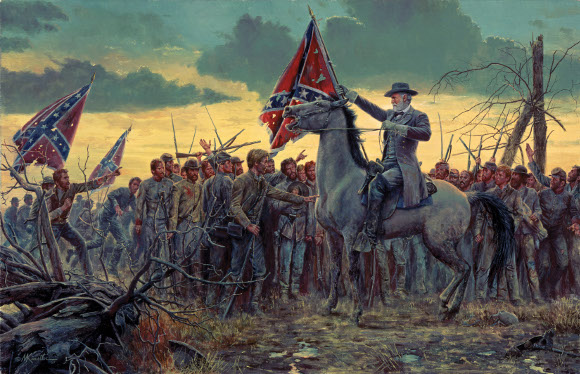
The American Civil War is one of the most tragic and fascinating periods in America History. This conflict stretched from April of 1861 to May of 1865. While there were numerous significant battles and events, there are several that stand out more than others. A few of these will be highlighted.
The Confederate Shelling of Fort Sumter
This event, on April 12, 1861, signalled the start of the American Civil War. Fort Sumter was located in the harbor of Charleston, South Carolina. After South Carolina seceded in Dec of 1860, state officials demanded that the Union forces there turn the fort over to state control. The commander of the fort, Major Robert Anderson, refused. After several hours of being shelled by confederate batteries, Anderson surrendered on April 13, 1861. There were no casualties on either side due to the fighting, although two Union soldiers did die as they were evacuating because of an accidental explosion.
The Wounding of Confederate General Joseph Johnston
After the war began, General Johnston was senior Confederate general and commanded the Army of Northern Virginia. General Johnston was an experienced and talented general. He is best known, however, for his cautious and strategic defensive maneuvering, rather than his offensive prowess. When Johnston was wounded on May 31, 1862, at the Battle of the Seven Pines, General Robert E. Lee assumed command and never relinquished it. General Lee was known primarily for his offensive prowess. It was Lee was able to keep the Union off balance and backpedaling for the next several years. Johnston did recover from his wounds and served primarily in the Western Theater until the end of the war.
The Death of General A. P. Johnston
At the beginning of the Civil War, many considered Confederate General Albert Sidney Johnston to be the most talented officer in their military. President Davis appointed Johnston as the commander of the Western Theater. On April 6, 1862, General Johnston caught General U. S. Grant’s forces completely by surprise and attacked them at Pittsburgh Landing, Tennessee. This became the Battle of Shiloh. Johnston’s forces battered Grant’s forces all day long. Johnston continued to stay close to the action and was struck in the leg by a bullet. He did not think the wound was serious and did not immediately seek help. The general bled to death from this wound. The next day, Grant’s forces counterattacked and forced the Confederates to retreat. General Johnston holds the distinction of being the highest ranking officer of either side to be killed during the war.
The Death of General Thomas “Stonewall” Jackson
Jackson was one of the South’s top generals and Robert E. Lee’s top lieutenant. He was audacious in his tactics. He had waged the Shenandoah Valley Campaign in 1862. This campaign pitted Jackson’s smaller, but much more mobile army against several larger Union forces. Jackson scored victory after victory and gave General Lee the breathing room he needed. In May of 1863, Jackson had joined with General Lee at Chancellorsville, Virginia. Lee rashly divided his smaller force in front of Union General Hooker’s forces. Jackson took these forces on a flanking maneuver and struck Hooker from behind. The Union Army was routed. Jackson, however, was shot and wounded by accident by his own troops. His left arm was amputated and it was thought that he would recover. Jackson contracted pneumonia, however, and died on May 10, 1863.
The Fall of Vicksburg
The surrender of Vicksburg, Mississippi, to Union forces on July 4, 1863, was the culmination of almost a year of effort by General Ulysses Grant. Vicksburg was almost impregnable and Grant tried several different methods to take the city. The siege of Vicksburg eventually led to Confederate General Pemberton surrendering to Grant. With the capture of Vicksburg, the North controlled the Mississippi River. This victory also led to Grant’s promotion as the Commanding General of all Union forces.
The Battle of Gettysburg
In the summer of 1863, with the South’s limited resources dwindling, southern General Robert E. Lee launched an invasion of the North. This was only the second time in the war that the South attempted to invade the North. The southern army was in dire need of the resources that the North held.
The two armies came together at the small town of Gettysburg, Pennsylvania on July 1, 1863. On the first day of the fighting, General Lee’s southern army dominated the fighting. On the second day of the fighting, the results were more even. On the climactic third day, however, General Lee believed that he could break the union army at its center. General Pickett led his men on the ill-fated Pickett’s charge. They were wiped out and the South was defeated. Most historians see Gettysburg as the turning point of the Civil War.
The American Civil War continues to fascinate, create debate, and inspire study. There are only a few of the key events of that conflict. They do provide a starting point, however, for further study.
Please consider supporting my wife, Annie, and I as we serve the Lord in Brazil. You can join our team by clicking here. Obrigado!


